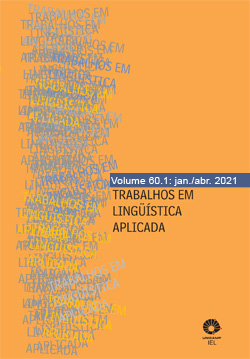Abstract
The present work discusses the overvaluation of whiteness and its implications for life in society, especially with regard to the condition of subordination of black people. The corpus of discussion will be a television media vehicle, the RJ-Móvel, broadcast by the daily local television newscast RJTV, of Rede Globo. RJ-Móvel addresses situations in which a journalist, together with her team, tries to mediate and solve problems related to the lack of infrastructure in peripheral neighborhoods of Rio de Janeiro, as well as in the so-called Leste Metropolitano and in the Baixada Fluminense. We will analyse the construction of the script and its insertion among the black and poor population, most of them residents in these places and on whom RJ-Móvel focuses, assuming an assistance character. As a complement to the analysis of this object, where other ways of operating racism practices and establishing logics of civilizing behavior are observed, we will also make a critical reading about the reporter’s posture, her movements and interaction dynamics with the local population. For that, we will establish a dialogue with the notion of artificial kindness, mobilized by Fanon (2008) in Black skin, white masks, in approximation with two other categories: the primitivization of the black person and the spectacularization of blackness and poverty. Thus, we are interested in reflecting on strategies that make us rethink the praise of whiteness, breaking with the hegemonic media discourse the performs assistance, produces and reproduces racist practices, among other modes of stereotyping.
References
ALAKIJA, A. (2012) Mídia e identidade negra. In: BORGES, R.; BORGES, R. (Orgs.) Mídia e Racismo. Petrópolis, RJ: DP e Alii: Brasília, DF, ABPN.
BENTO, M. A. (2002) Pactos narcísicos do racismo: branquitude e poder nas organizações empresariais e no poder público. Tese de Doutorado em Psicologia Escolar e do Desenvolvimento Humano. Universidade de São Paulo, São Paulo.
COUTINHO, E. G. (2014) Hegemonia e linguagem: clichês midiáticos e filosofia das massas. In: A Comunicação Do Oprimido E Outros Ensaios. Rio de Janeiro: Mórula.
DU BOIS, W.E.B. ([1935]2007) Black reconstruction in America 1860-1880. New York: Oxford University Press.
FANON, F. (2008) Pele negra, máscaras brancas. Salvador: EDUFBA.
FRANKENBERG, R. (1999) Introduction: Local whiteness, localizing whiteness. In: FRANKENBERG, R. (Org.) Displacing whiteness: essays in social and cultural criticism. Durham, NC: Duke University Press.
GARCEZ, P. M., BULLA, G. S. e LODER, L. L. (2014) Práticas de pesquisa microetnográfica: geração, segmentação e transcrição de dados audiovisuais como procedimentos analíticos plenos. D.E.L.T.A., 30.2.
HALL, S. (2016) Cultura e representação. Rio de Janeiro: Ed. PUC-Rio: Apicuri.
SCHUCMAN, L. V. (2012) Entre o “encardido”, o “branco” e o “branquíssimo”: raça, hierarquia e poder na construção da branquitude paulistana. Tese de Doutorado em Psicologia Social. Universidade de São Paulo, São Paulo.
SODRÉ, M. (2006) Estratégias sensíveis: Afeto, mídia e política. Petrópolis, RJ: Vozes.
SODRÉ, M. (2015) A ciência do comum: notas para o método comunicacional. Petrópolis: Editora Vozes.
SOVIK, L. (2009) Aqui ninguém é branco. Rio de Janeiro: Aeroplano, 2009.

This work is licensed under a Creative Commons Attribution 4.0 International License.
Copyright (c) 2021 Trabalhos em Linguística Aplicada


